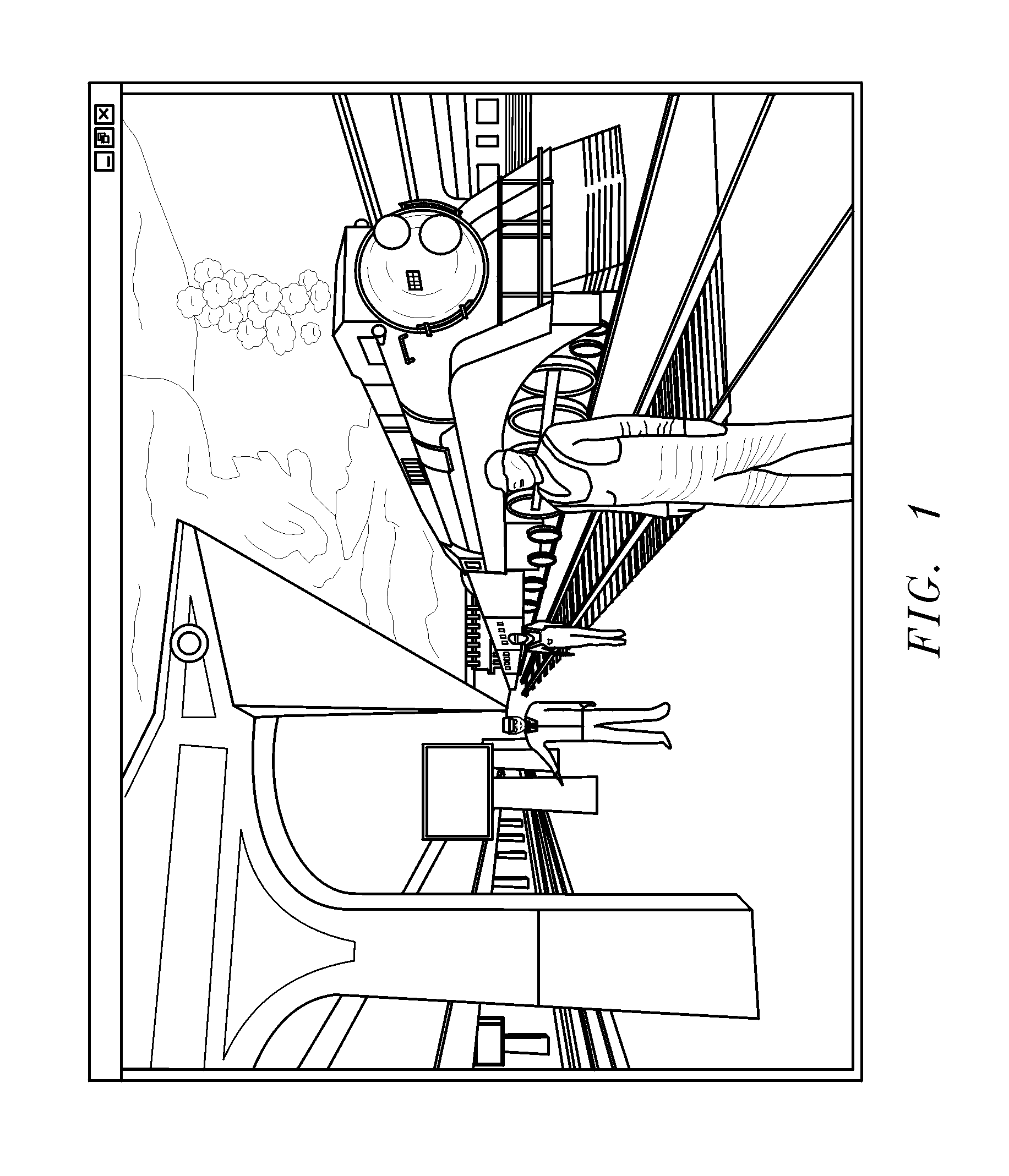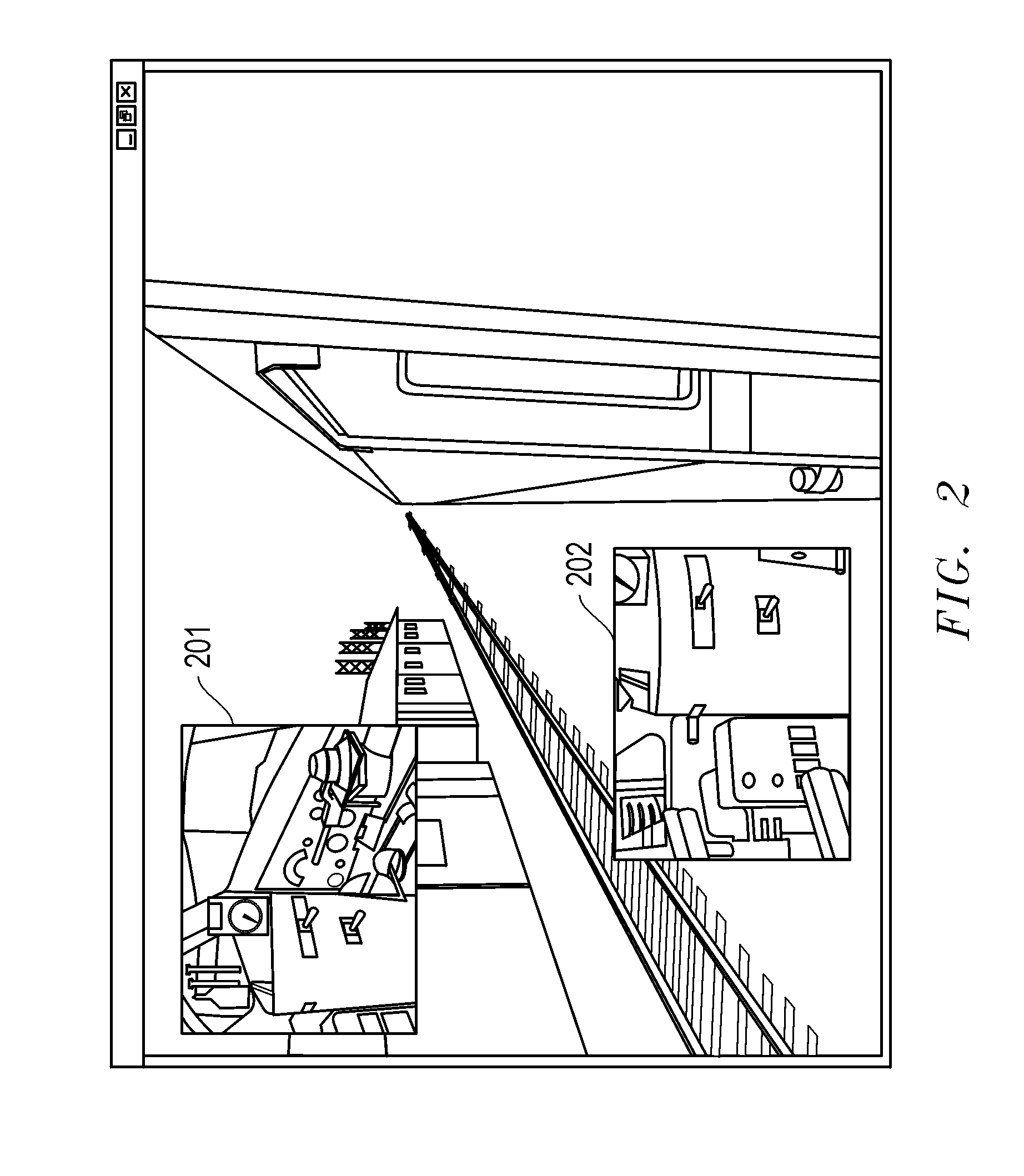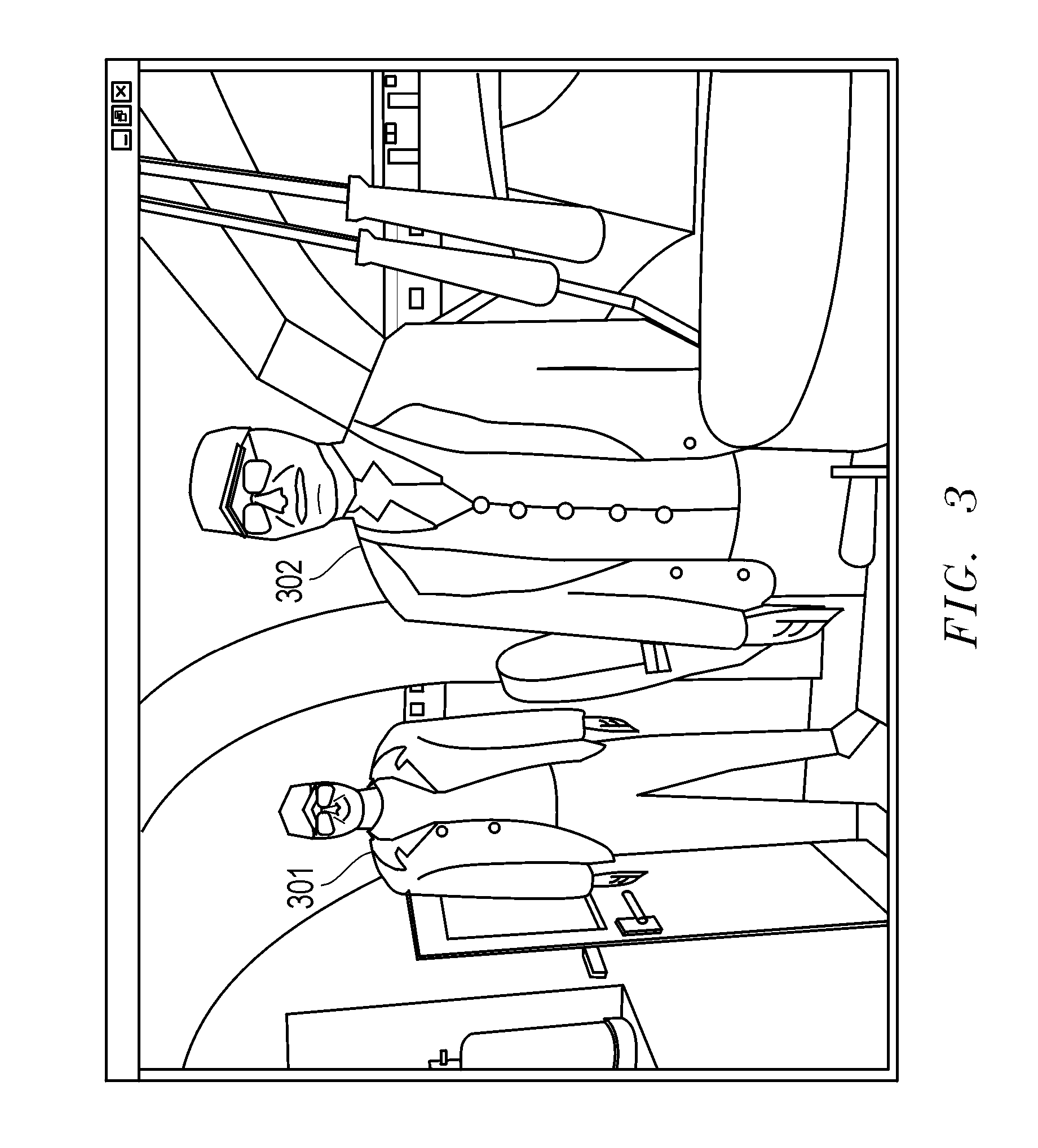Transportation simulator
a simulator and transportation technology, applied in the field of transportation simulators, can solve the problems of limiting the ability of users to learn firsthand information about the vehicle, simulators cannot allow multiple users to operate or move around in the same vehicle or even see, and the avatar is not able to move around
- Summary
- Abstract
- Description
- Claims
- Application Information
AI Technical Summary
Benefits of technology
Problems solved by technology
Method used
Image
Examples
example 1
[0035] In one embodiment, the simulator of the present invention is delivered as software that must be installed on a computer before use. Once installed, the program executable is launched to run the simulator. The user will first be presented with an interface prompting the user to choose the users hardware configuration.
[0036] The user may then be presented with a short movie of the simulator and, thereafter, another interface where the user may choose from a number of options. These options may include, for example, choosing the control configuration for the simulation, choosing the simulation mode (such as single user, multi-user, or on-line), choosing the world scenario, or choosing user set-up. If the user chooses “user set-up,” the user is given the ability to customize the avatars. As shown in FIG. 1, the avatars interact with the train as free-roaming, first-person avatars. The “user set-up” interface allows the user to choose from among many different clothes for the use...
example 2
[0053] During the previous example, if given permission from the simulator, at any time, the user may enter an editing mode. By depressing the assigned key on the keyboard for editing, the user can manipulate the objects in the simulation in real-time and, if on-line, collaborate with other users. Upon depressing the key for editing on the keyboard, the user is presented with an interface from which to choose an action. The available actions include create a new locomotive, car, track, object, or event, and modify a locomotive, car, track, object, or event.
[0054] In this example, the user chooses “modify the locomotive” and uses the assigned mouse button to select a locomotive or locomotive part in the user view. As shown in FIG. 4, a 3D interface will appear, giving the user various manipulation tools. By clicking the assigned mouse button on one of the colored axis bars 401, 402 or 403 and dragging, the user will be able to move the part along the selected axis. By clicking the a...
PUM
 Login to View More
Login to View More Abstract
Description
Claims
Application Information
 Login to View More
Login to View More - R&D
- Intellectual Property
- Life Sciences
- Materials
- Tech Scout
- Unparalleled Data Quality
- Higher Quality Content
- 60% Fewer Hallucinations
Browse by: Latest US Patents, China's latest patents, Technical Efficacy Thesaurus, Application Domain, Technology Topic, Popular Technical Reports.
© 2025 PatSnap. All rights reserved.Legal|Privacy policy|Modern Slavery Act Transparency Statement|Sitemap|About US| Contact US: help@patsnap.com



